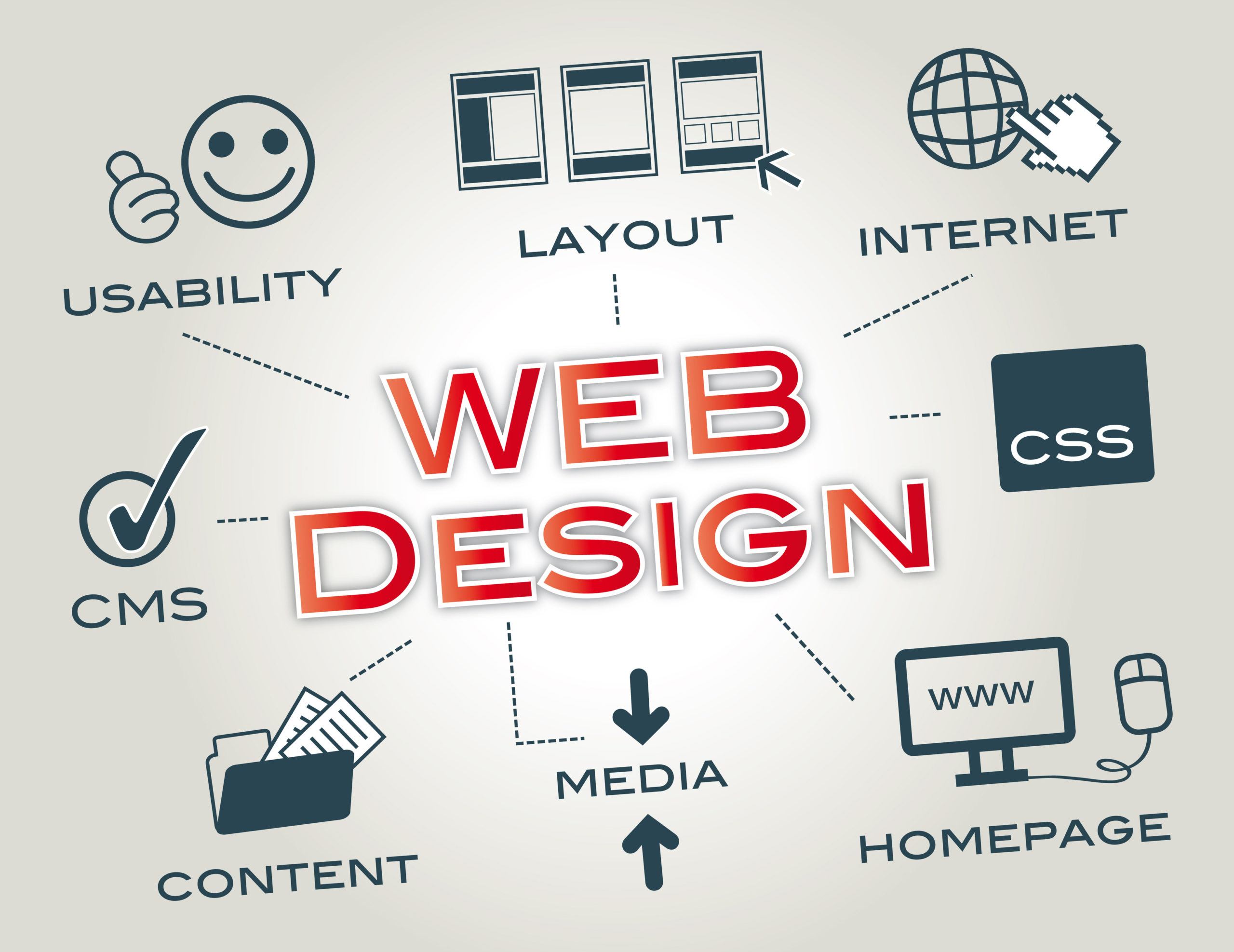How AI Is Revolutionizing Web Design South Africa for Small Businesses
Exactly how to Raise Your Online Visibility Through Ingenious Website Design Techniques
In today's digital landscape, a solid on-line visibility is necessary for people and organizations alike. Innovative internet Design strategies play a vital role in accomplishing this objective. By concentrating on components such as responsive Design, strong typography, and involving visuals, one can develop a website that reverberates with customers. However, the trip to reliable website design involves greater than simply looks. Exploring the vital components can reveal how to truly change an online identity.
Understanding the Importance of First Impressions
How crucial are first impacts in the domain name of internet Design? They function as crucial gateways to user engagement, affecting whether site visitors remain or leave. A well-crafted internet site can stimulate trust fund and professionalism, while a badly made one might increase doubts and punctual users to seek choices. Crucial element such as color pattern, typography, and design play significant duties in forming these initial impacts. For example, a clean, contemporary Design can boost individual experience and encourage expedition. Conversely, outdated or chaotic visuals can overwhelm and discourage potential clients. Ultimately, a web site's first effect can dictate individual behavior, making it important for designers to prioritize aesthetic appeals and functionality to develop long lasting links with their target market.
Embracing Responsive Design for All Devices

Mobile-First Design Method
As the digital landscape proceeds to develop, the mobile-first Design strategy has become a critical approach for creating internet sites that cater to an increasingly mobile-oriented target market. This approach prioritizes creating for smaller sized displays first, making sure that essential material and capabilities are easily accessible from the start. By concentrating on mobile users, designers are compelled to enhance web content and boost usability, bring about a more effective searching experience. As smart phones become the main methods of accessing the net, implementing a mobile-first technique not just enhances user interaction but also improves search engine positions. Services that embrace this Design approach position themselves competitively in the market, ensuring their on the internet existence resonates with customers across all devices.
Liquid Grid Equipments
Liquid grid systems stand for an essential shift in website design, allowing seamless flexibility throughout diverse tools and display dimensions. Unlike typical set layouts, fluid grids use loved one units like portions as opposed to pixels, enabling aspects to resize proportionally (Web Design Johannesburg). This adaptability ensures that material maintains its stability and functionality, despite the individual's device, whether it be a desktop, smartphone, or tablet . By accepting fluid grid systems, developers can produce functional and aesthetically enticing interfaces that improve individual experience. Furthermore, these systems simplify upkeep and updates, as modifications immediately show across all screen dimensions. Ultimately, liquid grids are important for modern-day internet growth, promoting a responsive Design philosophy that deals with a progressively mobile-centric target market
Utilizing Strong Typography and Shade Schemes
Bold typography and strategic shade schemes play a vital function in website design, affecting individual involvement and psychological action. The selections made in typography can enhance brand name identity, while color psychology can evoke particular sensations and reactions. Striking a balance between readability and aesthetic charm is essential for effective communication in any Design job.
Effect of Typography Choices
Typography works as an effective tool in internet Design, influencing both aesthetics and customer experience. The choice of fonts can stimulate particular feelings and set the tone for a web site. Strong typography, for instance, produces a feeling of relevance and necessity, attracting attention to essential messages or phones call to action. It helps establish hierarchy, allowing users to browse material extra intuitively. Pairing different typefaces can improve visual passion while preserving readability. Color pattern also play an essential duty in typography, as contrasting colors can make message attract attention and enhance clarity. By attentively choosing typography and shades, internet designers can greatly enhance involvement, making sure that material reverberates with the audience and reinforces brand name identification.
Color Psychology in Design
Shade plays a critical duty in shaping individual understandings and psychological responses in website design. By purposefully using color design, designers can influence and evoke details feelings individual habits. For example, warm colors like red and orange can produce a sense of urgency, while cooler tones such as blue and eco-friendly frequently advertise calmness and trust fund. Strong typography can improve this effect, attracting attention to essential messages and guiding customer communication. When incorporated successfully, striking typefaces and vivid shades can produce a unforgettable and appealing experience. Designers need to consider their target audience and the psychological effects of their shade selections to guarantee placement with the desired branding and individual experience (Web visit the site Design Johannesburg). Inevitably, the thoughtful application of shade psychology can greatly raise a site's impact
Stabilizing Readability and Design
When developing an aesthetically enticing web site, designers need to prioritize the you could try here fragile balance in between readability and stylistic choices. Vibrant typography can boost a website's character, however if overused, it risks overwhelming the web content. Designers must choose typefaces that not just convey the preferred state of mind however also remain understandable across different devices.
Color plans play a necessary duty in this balance. Effective use contrast can highlight key aspects without giving up clearness. Refined variants in shade can lead users' focus while keeping a natural aesthetic. Ultimately, a well-designed site should guarantee that design enhances functionality, promoting an interesting user experience. By thoughtfully blending bold typography and calculated shade options, developers can attain a harmonious balance that captivates site visitors while making sure the content continues to be available.
Including Interactive Aspects for Involvement
Incorporating interactive elements into website design greatly boosts user engagement and retention. Features such as tests, surveys, and interactive infographics enable individuals to actively get involved as opposed to passively consume material. This active involvement produces a sense of link and investment in the website, which can bring about longer go to periods. Furthermore, incorporating aspects like hover impacts and computer animations can offer prompt responses, making the user experience a lot more dynamic and delightful. Social sharing switches and remark sections enable customers to get in touch with others, fostering a neighborhood around the web content. why not find out more Generally, these interactive elements not just make the web site much more visually enticing yet also urge individuals to return, greatly enhancing total involvement metrics and improving the web site's efficiency as a communication device.
Enhancing Individual Experience With User-friendly Navigating
How can instinctive navigation transform a user's experience on a website? It offers as the backbone of customer interaction, leading visitors flawlessly via content. By utilizing clear food selections, logical paths, and regular layout, users can promptly locate the information they look for. This performance decreases disappointment, minimizes bounce prices, and motivates extended interaction. Furthermore, instinctive navigation boosts availability, dealing with diverse customer demands, including those with specials needs. When users can navigate easily, they are more probable to return, fostering commitment and trust. Inevitably, a well-structured navigating system not only enhances individual fulfillment yet also elevates the general efficiency of the internet site, making it an essential element of innovative website design methods.
Leveraging Aesthetic Narration With Images
What role does images play in crafting an engaging narrative on a website? Imagery serves as a powerful device for visual storytelling, capturing the essence of a brand and conveying feelings that words often can not. By tactically choosing images that straighten with the material, websites can produce a natural narrative that resonates with site visitors. Visual components can evoke sensations of inquisitiveness, enjoyment, or trust, improving user engagement and motivating much deeper exploration of the site. Furthermore, high-quality visuals complement the total Design, making the experience more dynamic and attractive. In an electronic landscape where focus spans are restricted, efficient images can distinguish an internet site from rivals, inevitably adding to a much more unforgettable individual experience and a stronger online existence.
Maximizing for Rate and Efficiency
While involving visuals are necessary for narration, boosting an internet site for rate and performance is equally crucial for assuring a favorable individual experience. A slow-loading site can deter visitors, leading to higher bounce prices and reduced conversions. To accomplish peak performance, web developers need to focus on image compression, minimize HTTP requests, and leverage internet browser caching. Furthermore, utilizing Material Delivery Networks (CDNs) can disperse content efficiently across various areas, lowering tons times. Executing asynchronous loading for scripts and focusing on above-the-fold content additionally improves performance. Frequently keeping an eye on site rate with devices like Google PageSpeed Insights aids determine bottlenecks. By concentrating on these techniques, businesses can assure their web sites are not only aesthetically appealing yet receptive and additionally quick, inevitably promoting individual satisfaction and involvement.
Frequently Asked Inquiries
How Can I Gauge the Efficiency of My Website Design?
To measure website design effectiveness, one can analyze individual engagement metrics, track conversion rates, conduct A/B screening, collect individual responses, and evaluate the internet site's performance across various devices to assure suitable customer experience.

What Are the Finest Tools for Examining Internet Site Design?
To evaluate internet site Design efficiency, numerous tools are readily available. Popular choices include Google Analytics for web traffic analysis, Hotjar for user habits understandings, and A/B testing systems like Optimizely to assess Design variants and user actions.
How Commonly Should I Update My Site's Design?

The frequency of web site Design updates differs, but typically, a refresh each to three years is recommended. Routine analyses assure the website remains appropriate, easy to use, and straightened with evolving industry criteria and technical advancements.
What Are Typical Website Design Errors to Stay Clear Of?
Common website design mistakes to avoid include chaotic formats, inadequate navigation, non-responsive designs, slow loading times, and overlooking mobile individuals. Web Design South Africa. Dealing with these issues can substantially boost customer experience and boost total internet site performance
How Can I Ensure My Website Comes to Everyone?
Ensuring site ease of access involves implementing alternative message for images, utilizing clear navigating, adhering to shade comparison guidelines, and supplying key-board navigation alternatives. Regular screening with varied users can even more enhance ease of access and improve customer experience.
